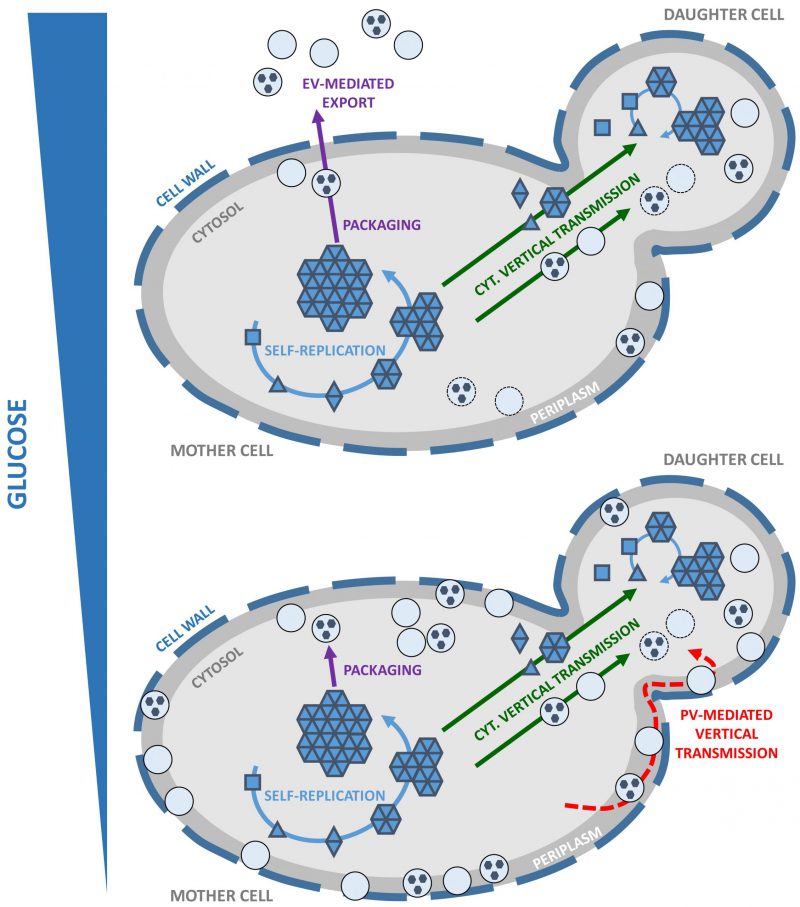Back to article: Hiding in plain sight: vesicle-mediated export and transmission of prion-like proteins
FIGURE 1: Working model for vesicle-mediated yeast prion propagation. Yeast prions self-replicate by the conversion of newly synthesized soluble monomers (squares) to a prion conformation (triangles) and their subsequent incorporation within high-molecular weight prion assemblies (solid blue arrows). Unidentified prion species or ‘propagons' are vertically and cytoplasmically transmitted to the daughter cell (solid green arrows) where they initiate a new round of prion self-replication. Yeast prions are packaged within vesicles in the cytosol (solid purple arrows). Vertical transmission of yeast prions could be mediated by propagons packaged within intracellular vesicles (solid green arrow) transported from mother to daughter cells where their content would be released in the cytosol to initiate a new cycle of prion self-replication. Under high glucose conditions, EV are exported across the cell wall (depicted as a thick dashed line) and to the extracellular medium (upper panel; solid purple arrows). Under limiting glucose conditions, high amounts of PV accumulate in the periplasm. Vertical transmission of yeast prions could be mediated by the reinternalization of PV and release of their content in the cytosol of daughter cells (lower panel, red dashed arrow).

